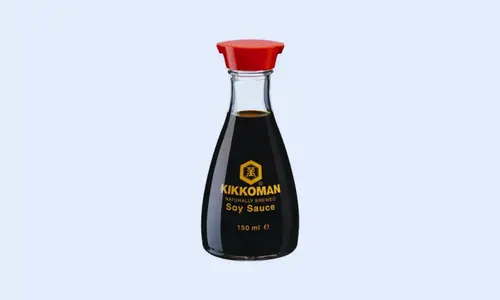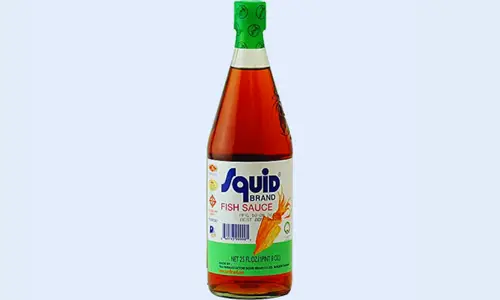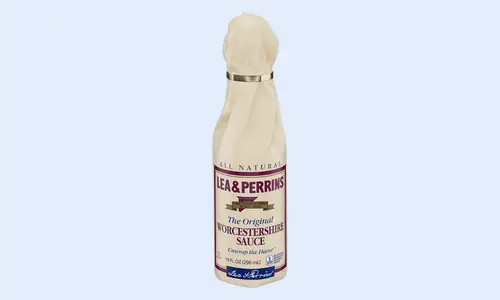Coconut aminos, sometimes referred to as coconut liquid aminos or coco aminos, are a dark, thin sauce made from the sap of the unopened coconut flower of the coconut palm tree.
It is combined with salt and left to ferment, resulting in a liquid that tastes similar to soy sauce with a deep umami flavor. Contrary to popular belief, coconut aminos do not taste like coconut but instead have a savory taste with a buttery aftertaste.
This ingredient is often used in dipping sauces and marinades. You will often find coconut aminos as an ingredient in health-conscious recipes as it is soy-free, gluten-free, dairy-free, and vegan friendly. Coconut aminos are also low-glycemic and contain 17 amino acids, so they’re ideal for weight loss.

Coconut Aminos vs. Soy Sauce
Coconut aminos are often substituted for soy sauce as their tastes are similar. However, there are some key differences between the two. Coconut aminos have a milder, slightly less salty flavor than soy sauce and contain 70-75% less salt than soy sauce, making it ideal for people looking to watch their sodium intake.
Coconut aminos also contain no preservatives or MSG, which appeals to many people who crave the salty taste of Asian-inspired dishes but do not want MSG added to their diet. While coconut aminos are often the healthier option, unless you are on a health journey, most people do not have coconut aminos immediately available.
Coconut Amino Substitutes
[1] Miso Paste
Like soy sauce, miso paste is made from fermented soybeans and is typically easy to find at your local grocery store. Because the paste-like consistency is different from the thin sauce-like consistency of coconut aminos, you will need to add one part water to one part miso paste to create the desired texture.

Miso does come in different forms, such as white miso, red miso, and yellow miso, but white miso works best as a substitute for coconut aminos. Like coconut aminos, and unlike soy sauce, miso paste is gluten- and soy-free, so this is an excellent alternative for those with a gluten or soy allergy.
[2] Soy Sauce + Water
If you do not have a gluten or soy intolerance and only have soy sauce on hand, it is very easy to obtain the thin consistency of coconut aminos using soy sauce. Start with half of the soy sauce as the recipe calls, and mix with water at a 1:1 ratio.
For example, if the recipe calls for ½ teaspoon of coconut aminos, start with ¼ teaspoon of soy sauce and ¼ teaspoon of water and add more if desired.

[4] Fish Sauce
Fish sauce is a common substitute for coconut aminos as it has a similar consistency and flavor. However, as the name suggests, fish sauce does have a distinctive fishy taste which may not be a suitable substitute for your coconut amino ingredient. Therefore, you will want to add some ingredients to your fish sauce to make it a perfect substitute.
- Beef Broth
- Balsamic vinegar
- Tomato paste
- Onion powder
- Salt
Combining these six ingredients will give you the umami flavor of coconut aminos without an overpowering fish flavor.

[4] Dried Shiitake Mushrooms
When prepared correctly, dried mushrooms can be a great alternative to coconut aminos. Start by placing your dried mushrooms in a pot of boiling water and leave to allow them to soak for at least two hours.
Once the water has turned a dark color, remove your shiitake mushrooms, add a pinch of salt, and use the infused water to replace coconut aminos. Using mushrooms as a replacement for coconut aminos is best for soups or broth recipes because the substitute’s base is water.
[5] Tamari
Tamari, also known as shoyu, is a kind of soy sauce but does not contain wheat, making it safe for those with celiac disease. Made with a unique fungus and brine in the fermentation process, it has a similar rich flavor but is slightly stronger than soy sauce and considerably less salty.
Substitute coconut aminos with tamari at a 1:1 ratio but start with a 0.5:1 ratio first, as the flavoring can be much more overpowering than coconut aminos and can change the overall taste of your dish if you use too much.
[6] Worcestershire Sauce
While the origins of Worcestershire sauce differ wildly from the other substitutes on this list, this vinegar-based sauce works great as a substitute for coconut aminos. Originating in England, this sauce is most commonly used as a marinade and a condiment, but its combination of vinegar, anchovies, molasses, and sugar creates a similar taste to coconut aminos.
Because Worcestershire sauce has a thicker consistency, you may need to add water to thin the sauce.

FAQ
What is a good substitute for coconut aminos?
If you don’t have coconut aminos available, consider using miso paste, fish sauce, dried shitake mushroom, tamari, or Worcestershire sauce, or make your own using soy sauce and water.
Can I use Worcestershire sauce instead of coconut aminos?
Like coconut aminos, Worcestershire sauce is soy free, and while some brands are gluten-free, many brands are not, so check the label before using this as a gluten-free option. Worcestershire sauce is also much higher in sodium and sugar than coconut aminos. If you are using it as a substitute for coconut aminos, add water to thin the sauce before adding it to your dish.
Do coconut aminos really taste like soy sauce?
Coconut aminos and soy sauce are similar in color and consistency. It is not as rich or salty as soy sauce and has a milder flavor, but it is considered a healthy alternative to soy sauce.